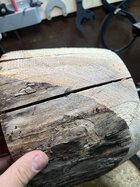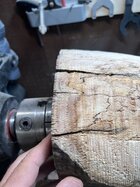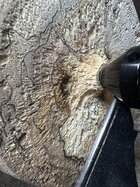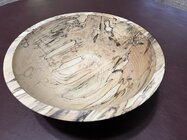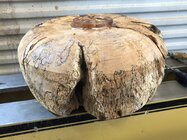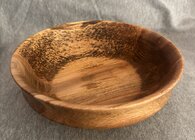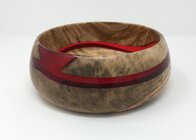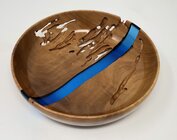You don't like me giving him things to be cautious about?
Which resins are tolerant of moisture and what moisture content can the wood be? I've seen Alumilite turn into foam with moisture in the wood.
If Cactus juice is tolerant of water, why do they want you to bake the wood to near zero moisture content?
Preparation
The first thing is to make sure your material has less than 5% moisture content (preferably 0%) and clean. https://turntex.com/help-center/cactus-juice-stabilizing-resources/60-using-cactus-juice
Looking at a picture you can judge moisture content?
Casting resin is a very poor adhesive. If the crack goes all the way through, you are comfortable taking a chance to catch each half with your face?
Assuming it's salvageable, does it still make economic sense to spend $75-$150 in resin on it? Not my decision of course, but since it looks like a sponge, it might take a half gallon of Cactus Juice, and then the resin.
